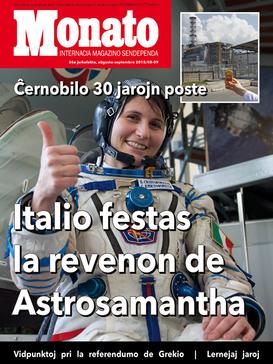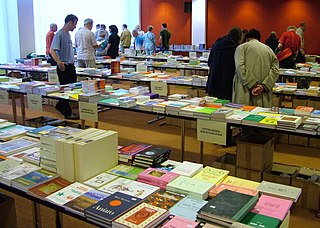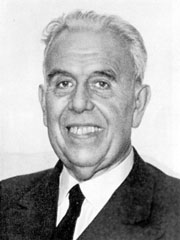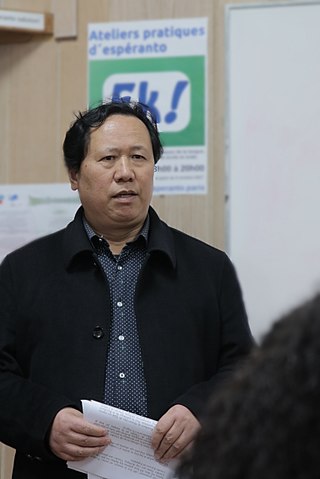
Esperanto is the world's most widely spoken constructed international auxiliary language. Created by the Warsaw-based ophthalmologist L. L. Zamenhof in 1887, it is intended to be a universal second language for international communication, or "the international language". Zamenhof first described the language in Dr. Esperanto's International Language, which he published under the pseudonym Doktoro Esperanto. Early adopters of the language liked the name Esperanto and soon used it to describe his language. The word esperanto translates into English as "one who hopes".

Esperantujo or Esperantio is the Esperanto community; the community of speakers of the Esperanto language and their culture, as well as the places and institutions where the language is used. The term is used "as if it were a country."
Esperanto culture refers to the shared cultural experience of the Esperantujo, or Esperanto-speaking community. Despite being a constructed language, Esperanto has a history dating back to the late 19th century, and shared socio-cultural norms have developed among its speakers. Some of these can be traced back to the initial ideas of the language's creator, Ludwig Zamenhof, including the theory that a global second language would foster international communication. Others have developed over time, as the language has allowed different national and linguistic cultures to blend together. Some Esperanto speakers have also researched the language's ideologies.

The World Esperanto Youth Organization is an organization dedicated to supporting young Esperanto speakers around the world and promote the use of Esperanto. TEJO was founded in 1938 as the Tutmonda Junular-Organizo and took its current name in 1952. In 1956, TEJO became the youth section of the Universal Esperanto Association (UEA). In 1971, the finances and administration of TEJO were fully integrated into those of UEA.

The Universal Esperanto Association, also known as the World Esperanto Association, is the largest international organization of Esperanto speakers, with 5501 individual members in 121 countries and 9215 through national associations and in official relations with the United Nations. In addition to individual members, 70 national Esperanto organizations are affiliated with UEA. Its current president is the professor Duncan Charters. The magazine Esperanto is the main organ used by UEA to inform its members about everything happening in the Esperanto community.

Kálmán Kalocsay was a Hungarian Esperantist poet, translator and editor who considerably influenced Esperanto culture, both in its literature and in the language itself, through his original poetry and his translations of literary works from his native Hungarian and other languages of Europe. His name is sometimes Esperantized as Kolomano Kaloĉajo, and some of his work was published under various pseudonyms, including C.E.R. Bumy, Kopar, Alex Kay, K. Stelov, Malice Pik and Peter Peneter.

Monato is a monthly magazine produced in Esperanto which carries articles on politics, culture and economics. It is printed in Belgium and distributed to readers in 65 countries. The title simply means "month".

Literature in the Esperanto language began before the first official publication in Esperanto in 1887: the language's creator, L. L. Zamenhof, translated poetry and prose into the language as he was developing it as a test of its completeness and expressiveness, and published several translations and a short original poem as an appendix to the first book on the language, Unua Libro. Other early speakers wrote poetry, stories, and essays in the language; Henri Vallienne was the first to write novels in Esperanto. The first female Esperanto novelist was Edith Alleyne Sinnotte with her book Lilio published in 1918. Except for a handful of poems, most of the literature from Esperanto's first two decades is now regarded as of historical interest only.

Kontakto is an Esperanto magazine published by TEJO and supported by the Universal Esperanto Association (UEA). The magazine has readers in about 90 countries of the world. It started in 1963 through a proposal of the UEA committee by Humphrey Tonkin, who became its first editor in chief and who provided a magazine that touched on topics of interest to Esperanto youth. The magazine often used the slogan "In Esperanto, but not about Esperanto."
Locus: The Magazine of The Science Fiction & Fantasy Field, founded in 1968, is an American magazine published monthly in Oakland, California. It is the news organ and trade journal for the English-language science fiction and fantasy fields. It also publishes comprehensive listings of all new books published in the genres. The magazine also presents the annual Locus Awards. Locus Online was launched in April 1997, as a semi-autonomous web version of Locus Magazine.
The Canadian Esperanto Association is a registered educational charity whose objective is to advance the education of Esperanto among the Canadian public.
William Main Page was a British lawyer and Esperantist.

Edmond Privat was a Francophone Swiss Esperantist. A historian, university professor, author, journalist and peace activist, he was a graduate of the University of Geneva and a lecturer for the World Peace Foundation. His collective works consist of original dramas, poems, stories, textbooks and books about the Esperanto movement.

Michel Duc Goninaz was a French Esperantist known worldwide for his 2002 revision of La Plena Ilustrita Vortaro de Esperanto.

PACO was the name of the official Mondpaca Esperantista Movado (MEM) magazine.

The Esperantist of the Year is an honorary designation bestowed each year by the editors of the Esperanto-language monthly La Ondo de Esperanto. The award recipient is selected by an international jury led by Halina Gorecka, the Russian publisher of the magazine.

The World Esperantist Vegetarian Association is a voluntary association of Esperanto-speaking vegetarians. Founded in 1908, the group's working language is Esperanto, and it is the oldest international organization of vegetarians that is currently active. TEVA published a journal, Vegetarano ("Vegetarian") from 1914 to 1932, revived in 2009 as Esperantista Vegetarano, and has also operated a spirited Internet mailing list through Yahoo! Groups since 2005.

Andreo Cseh was a Hungarian/Dutch Roman Catholic priest and Esperantist known for inventing the Cseh method of Esperanto instruction.
The International League of Christian Esperantists is the association of protestant Esperantists. It was founded in 1911, during the Universal Congress of Esperanto in Antwerp. Its members from very diverse backgrounds, mostly protestant churches. KELI publishes a bimonthly magazine, Dia Regno, which started to appear regularly in 1908, when the German Paul Hübner was sure that five people would subscribe. Now the magazine serves as a tool among members in 48 countries from diverse faiths, Adventists to Quakers, Lutherans, Calvinists, Anglicans, etc., but also people of the Eastern Orthodoxy.














